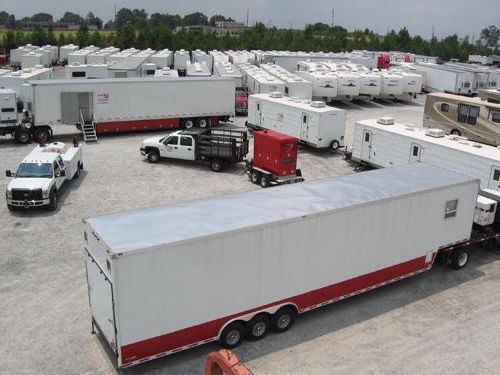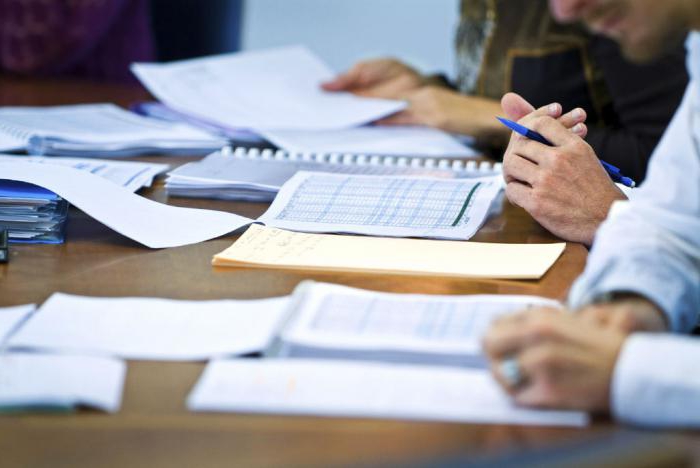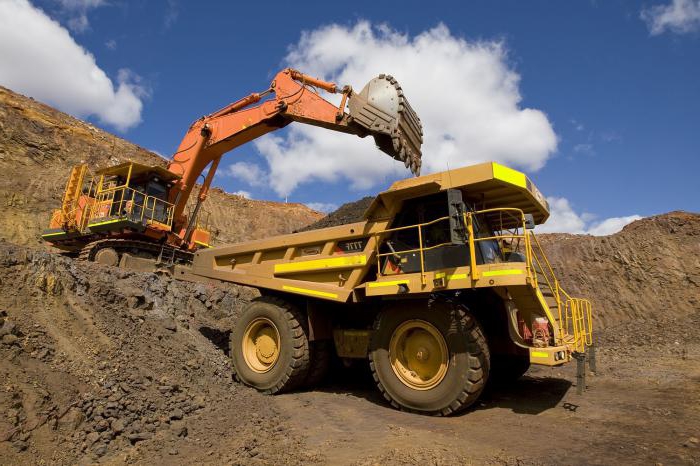In order to have a clear idea of the enterprise and the nuances of its functioning, it is necessary to deal with such a concept as fixed assets. What are the main resources, it is necessary to understand, otherwise it will be difficult to figure out the algorithm for the successful development of the company.
What is a statutory fund?
Under the authorized capital of the enterprise you need to understand the totality of material and material and production values used in the production process over a long period of time. In fact, we are talking about those resources without which the enterprise will not be able to fully and stably function. The role of such resources can be buildings, machinery, equipment and any means of labor that ensure the production process. Concerning such a thing as a fixed asset, one should not forget about cash, because without them the enterprise will not be able to receive circulation funds and revolving funds.

Given this information, it can be argued that the rational and competent use of fixed assets is one of the priorities of any company.
Such a concept as the fixed assets of an enterprise can be replaced by other terms that carry the same semantic meaning: fixed capital, fixed assets, non-current assets or means of production.
Classification of fixed assets
In order for the state of non-current assets of the enterprise to be evaluated more constructively, it makes sense to classify fixed capital:
- Buildings. These are various flyovers, bridges, sewer, hydraulic and waterworks, oil and gas wells, mines, viaducts and tunnels. As the main task of structures of this format, it is possible to determine the maintenance of production, which is not affected by the change in labor.
- The main fund includes buildings. In this case, we are talking about the premises of various services of the enterprise, shops, laboratories, warehouses and industrial buildings. This type of asset is necessary to create comfortable conditions that ensure the normal course of production. The “buildings” category is relevant for protecting equipment and machines from environmental influences that can cause damage.

- Laboratory equipment, as well as devices and devices that perform both measuring and regulatory functions. The main fund of an enterprise of this category is formed from interlocks, alarms, measuring, testing, and test equipment. The relevance of this group of resources is due to the need for automated production management, as well as laboratory research and testing of semi-finished products, finished products, components and raw materials.
- Another group of resources that forms the main fund is fixed assets, including equipment and machinery. Thermal furnaces, equipment, information, energy and working machines, woodworking and metal-cutting machines, galvanic equipment, presses, electrical equipment and forging machines fall into this category. This category of resources is necessary for the formation and provision of full-fledged production, as a result of which the production process becomes possible, which allows the formation of a finished product when exposed to an object.
- Household and industrial equipment.The main fund includes this component, which is understood as sports and household equipment (household and office supplies) and production equipment, including items that perform technical functions (furniture, containers for storing liquids, containers). This resource group should be perceived as a necessary component of the production process.

- Vehicles. Understanding what the main fund of the enterprise is, it is necessary to touch on the category of vehicles. This resource group includes air Transport, railway rolling stock, trams, means of carriage and floor production vehicles, cars, subway cars and means of water transport. Without this category, it is difficult to imagine the transportation of people and goods of the enterprise, intra-workshop and intra-production transport, as well as the performance of household, household and production functions.
- The category of transmission devices is also part of the resources that form the main fund of the enterprise. These are various communication and power transmission devices. We are talking about water supply systems, sewer networks, heat and electricity networks, overhead communication lines, pipelines and cable lines. This resource category is necessary to ensure the transfer of mechanical, thermal and electrical energy to working machines.
The difference between fixed assets in terms of participation in the production process
If you use this feature classification of fixed assets then there are 2 key categories:
- Passive elements (structures, buildings). Their main goal is to provide the necessary conditions for the production process.
- Active elements (equipment, machines). This part of the resources is necessary to directly affect the quality and quantity of products.

In the framework of the topic "The main fund of the enterprise is ... What is it made of?" It is worth paying attention to the business cycle, which includes the following stages:
- depreciation of fixed assets;
- depreciation;
- accumulation of funds necessary for the restoration of fixed assets;
- replacement of fixed assets through investment.
When answering the question of what is the main fund of an enterprise, it is worthwhile to deal with such a concept as fixed capital. Under this term you need to understand the monetary value of fixed assets as material assets that are designed for a long period of operation.
In-kind valuation of fixed assets
The main fund of the enterprise is resources that require competent management. In turn, managing funds is extremely difficult if you do not evaluate them. Non-current assets are recorded in cash and in kind.
If we talk about the essence of the natural form of assessment, it is worth noting that it is done through an inventory. This is done annually by the efforts of a special commission. The result of this process is the updating of data regarding the nomenclature and list of fixed assets by type. This list takes into account the life and quality of resources.
The data obtained in the inventory process can also be used as a basis for writing off funds.
Monetary form of accounting
It is important to understand that just a natural form of accounting is not enough for an objective assessment of basic resources. This is due to the following fact: through its (in-kind) use, it is impossible to establish the size of the fund in a monetary representation. Since the fixed assets are fixed assets with a certain price, an objective assessment of the enterprise’s resources should include a monetary or value form of accounting.

If you evaluate the enterprise as a whole and its specific components, in particular using the principles of accounting, it makes sense to highlight the following types of value of fixed assets:
- Initial cost.It implies the price of the object at the moment when it was put into operation at a particular enterprise.
- The cost of reproduction. In this case, it is worth understanding the price in modern conditions of those funds that were created earlier. It may also be the cost of a copy of the property or object that was acquired or recreated at the current prices at the time of verification.
- Balance sheet. Understanding what the main fund of the enterprise is, it is worth paying attention to this form of assessment. Its essence is to determine the value of fixed assets at the time of the accounting. This takes into account both improvements and depreciation that have occurred over the entire life of the facility.
- Residual value. This type is characterized by the difference between the amount of depreciation accumulated over the entire life of the resources (taking into account the improvements that raised the price level of the property) and the initial cost.
What is the essence of depreciation of fixed assets?
The fact that the main fund is the resources in operation indicates the following: they are subject to wear and tear on a stable basis, which means that they are physically obsolete. As for equipment, technological lines and machines, they are also characterized by moral obsolescence, which should be understood as the productive, technological and structural irrelevance of such resources. The pace of obsolescence can be far ahead of the physical. In order to receive economic compensation for physical and moral obsolescence of fixed assets, the enterprise management is forced to compensate for the decrease in the cost of resources through depreciation charges, which become part of the cost of production.
If we try to describe this process more concisely, then we can say that depreciation is a method of including fixed assets over their life in parts in the costs of production and the subsequent use of these funds in order to compensate for the consumption of funds. For these purposes, the existence of a separate fund - depreciation.
Depreciation rate of fixed assets
In fact, this norm is the ratio of the amount of deductions made for depreciation to the value of fixed assets. This ratio is expressed as a percentage.
Given that fixed assets are resources that are constantly exploited, when calculating depreciation, it is necessary to take into account the period of their use. We are talking about the period of time during which fixed assets serve as a means of achieving the goals of the enterprise and bring him income.
To make depreciation, one of several relevant schemes is used:
- Write-off of the value is proportional to the volume of production. For the calculation, the ratio of the initial cost of fixed assets and the volume of production, which is expected to be produced over the entire period of operation, to the volume of production in the reporting period is used. It should be noted, studying the main fund, that such a write-off of funds is extremely important for the full functioning of the enterprise.
- The method of reduced residue. This depreciation accrual accrual scheme is based on the accounting for the residual value of the fixed assets at the beginning of the reporting year and the depreciation rate, for the calculation of which we take the coefficient of useful acceleration and the indicator of useful use of the fixed assets.
- Linear. The deduction amount is determined by the current or initial price of the product and the depreciation rate.
- Write-off of the value by the sum of the number of years of the useful life. In this case, the initial price and the annual ratio are taken into account.
Thus, the key function of depreciation is to restore fixed assets and ensure production.
Useful life
Speaking of what a fixed asset is, it is necessary to touch on the operational life of its facilities in more detail. Under such a concept as useful life it is worthwhile to understand the period of time (estimated) during which the non-current assets operated by the enterprise will allow to produce or fulfill the expected volume of services or products.
Understanding what a fixed asset is, it is important to understand the following fact: a similar approach involves establishing a useful life based on passport data. For example, the indicated time of permissible use of a particular structure is 10 years. So, it is this indicator that should be used in the calculations. Although the construction can actually last longer.
This means that during economic calculations, the depreciation of fixed assets should not be lower than the estimated amount of funds for the entire time of their useful use.
The main fund of the enterprise: an example
As an actual example of the fixed capital of an enterprise, non-current assets of Monolit LLC can be used. If we divide the fixed assets of this company by type of economic activity, we can identify several categories of resources: manufacturing, mining, production and subsequent distribution of water, gas and electricity.

Taking into account the company's performance for 2013, it can be noted that vehicles (26.4%), as well as equipment and machinery (25.8%) prevailed among various categories of basic resources for that period of time. The remaining objects of the fund are distributed in the following percentage ratio: household and production equipment - 23.4%, buildings - 18.7%, other components of fixed assets - 5.8%.
Oil and gas complex
NGK's main fund is another striking example of non-current assets, but with its own specifics. Typically, the category of structures (bridges, overpasses, canals, dams, etc.) is not included in the group of active core resources. The situation with the oil and gas complex is different: gas and oil wells are considered here as structures, which are the means of producing the target product. For this reason, wells belong to the active part of fixed assets.
Moreover, the active part of the main resources is of key importance in the process of analyzing the use of non-current assets or their support, because it is its specific gravity and size that determine the production capacity of the enterprise. Understanding what a fixed asset is, you need to consider this information.

The proportion of the active part of fixed assets in the oil and gas complex is quite high: it reaches 90% in gas and oil production. In pipeline transport, this indicator is 94%, in drilling - 80%, and in the oil refining industry exceeds 60%.
It is also important that the efficiency of capital investments in the gas and oil industry is much higher than, for example, in the fuel and other industries. This is due to the fact that the bulk of the investment goes to creating the active part of non-current assets, on which the production of the finished product depends. And if we recall the principle that fixed assets are fixed assets, the oil and gas complex has the most attractive resource base.
The conclusion is obvious: fixed assets of the enterprise are a key factor affecting the quality and volume of production, and therefore, determining the degree of development of production.
